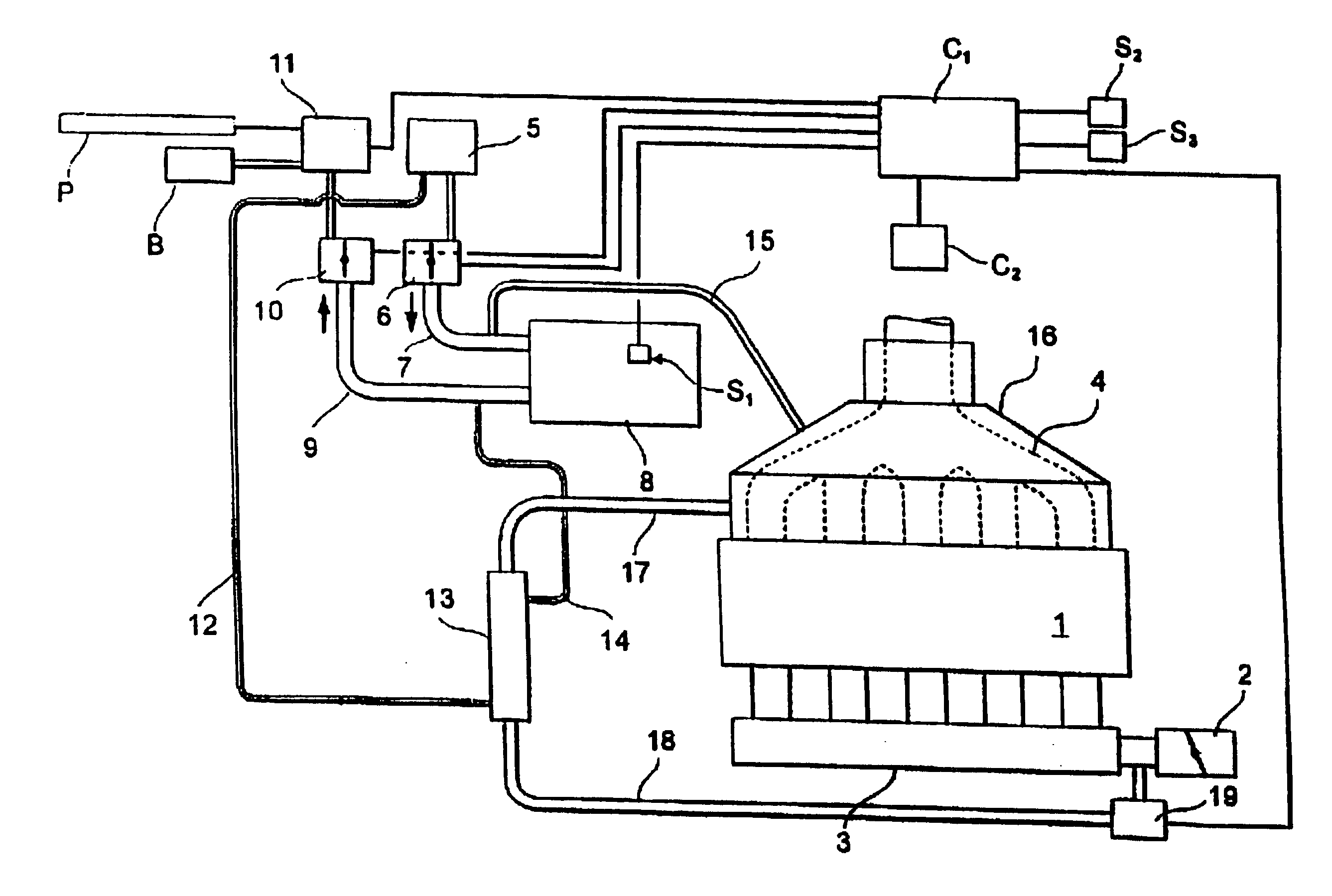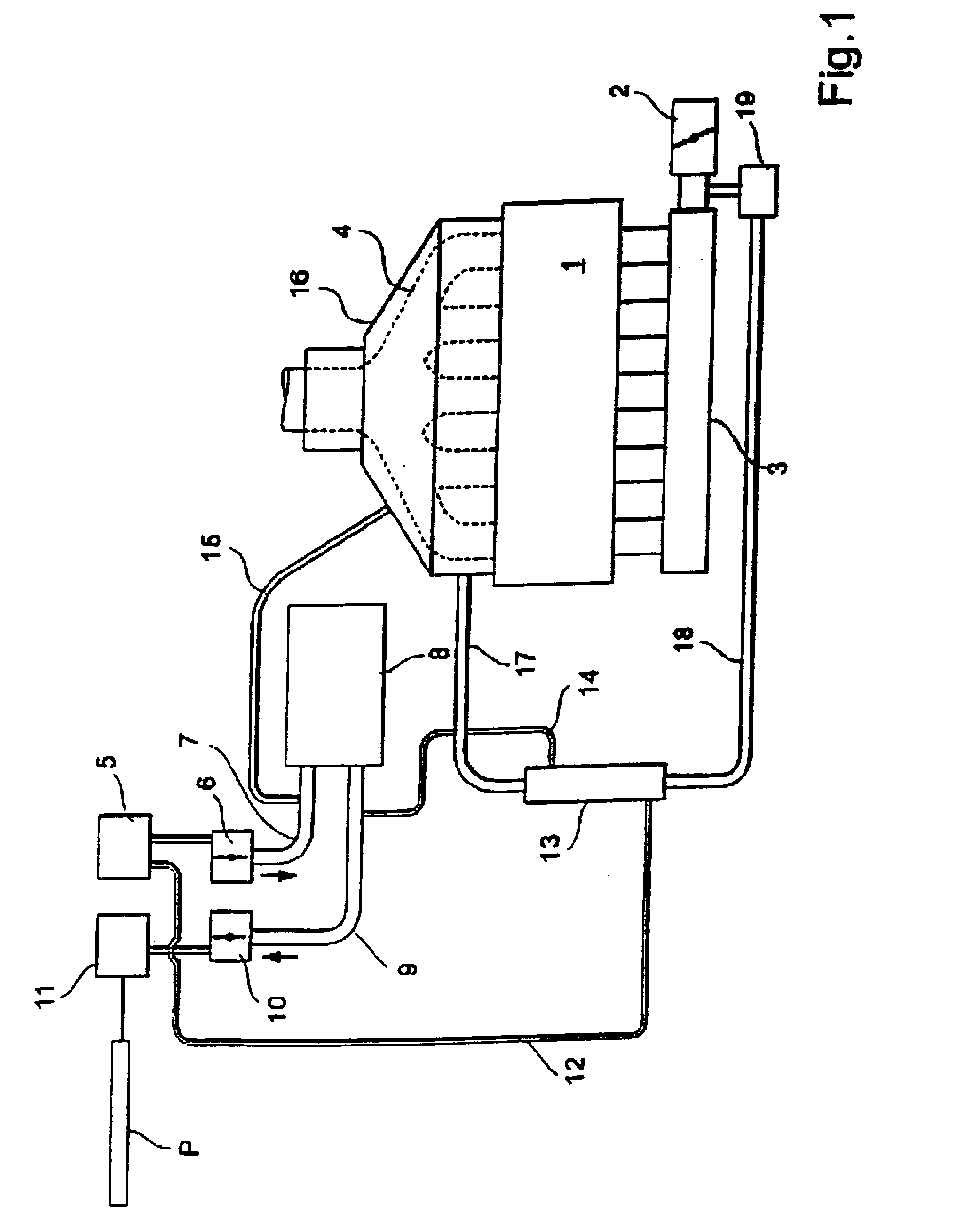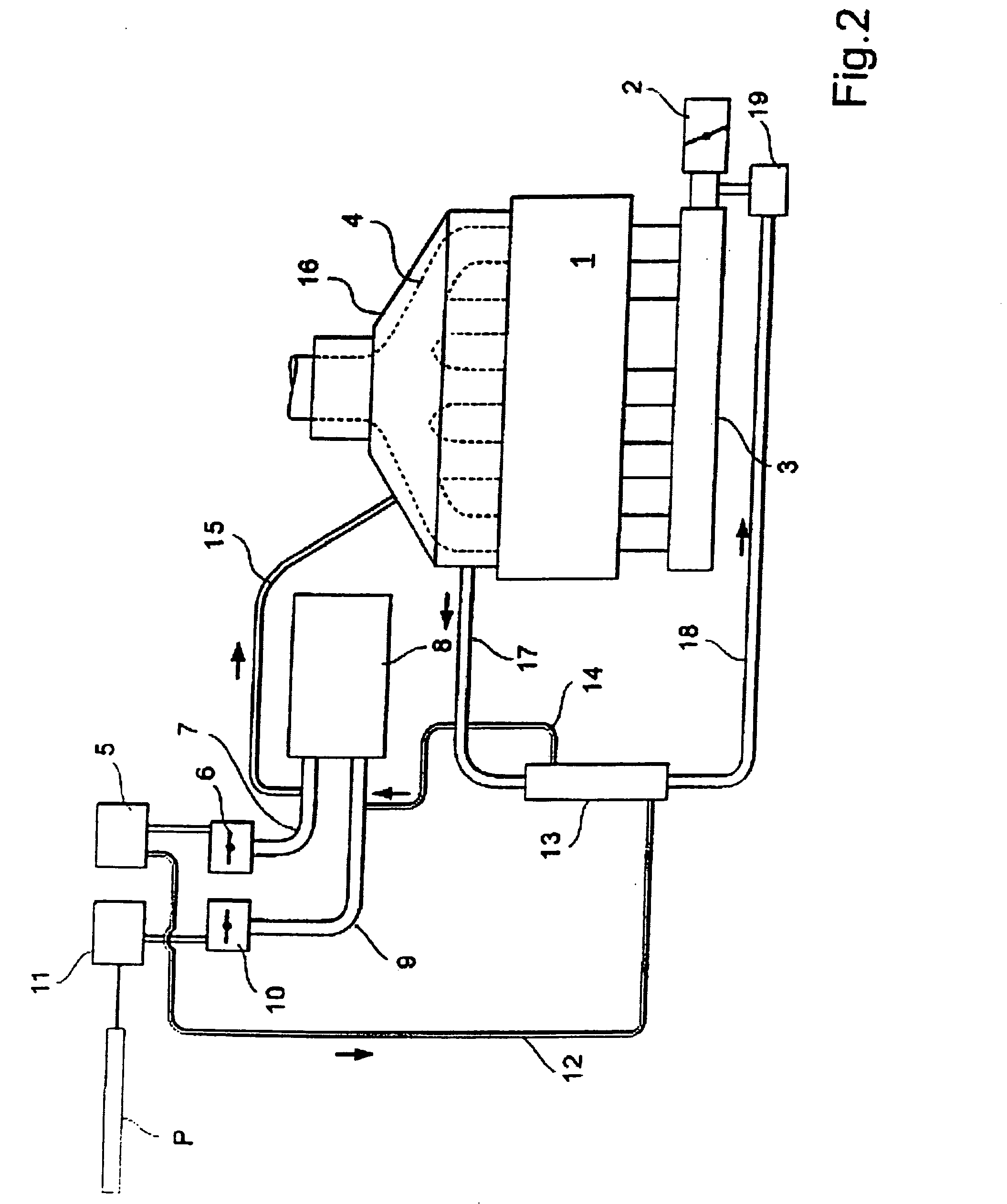Ambient air pollution trap
a technology for air pollution and ambient conditions, applied in separation processes, machines/engines, transportation and packaging, etc., can solve the problems of burning pollutants and destroying remaining pollutants, and achieve the effect of lowering the temperatur
- Summary
- Abstract
- Description
- Claims
- Application Information
AI Technical Summary
Benefits of technology
Problems solved by technology
Method used
Image
Examples
Embodiment Construction
[0025] In the following text a number of embodiments will be described in detail. When describing the direction of the flow of air, the terms “upstream” and “downstream” are defined to apply to the instantaneous direction of flow. Because the direction of flow is reversed between adsorbing and desorbing modes, a first device may be placed upstream of a second device in the adsorbing mode and downstream of the same device in the desorbing mode.
[0026] The description below describes a method and an apparatus for removing pollutants, such as hydrocarbon compounds, from ambient air by means of an adsorption unit arranged in a ventilation system for a passenger compartment in a vehicle provided with a combustion engine.
[0027]FIG. 1 shows a multicylinder internal combustion engine 1 with an intake conduit provided with a main throttle 2. From the throttle 2, intake air passes through an inlet manifold 3 connected to each cylinder. The combusted exhaust gases leave the engine through an ...
PUM
| Property | Measurement | Unit |
|---|---|---|
| temperature | aaaaa | aaaaa |
| temperature | aaaaa | aaaaa |
| temperatures | aaaaa | aaaaa |
Abstract
Description
Claims
Application Information
 Login to View More
Login to View More - R&D
- Intellectual Property
- Life Sciences
- Materials
- Tech Scout
- Unparalleled Data Quality
- Higher Quality Content
- 60% Fewer Hallucinations
Browse by: Latest US Patents, China's latest patents, Technical Efficacy Thesaurus, Application Domain, Technology Topic, Popular Technical Reports.
© 2025 PatSnap. All rights reserved.Legal|Privacy policy|Modern Slavery Act Transparency Statement|Sitemap|About US| Contact US: help@patsnap.com



